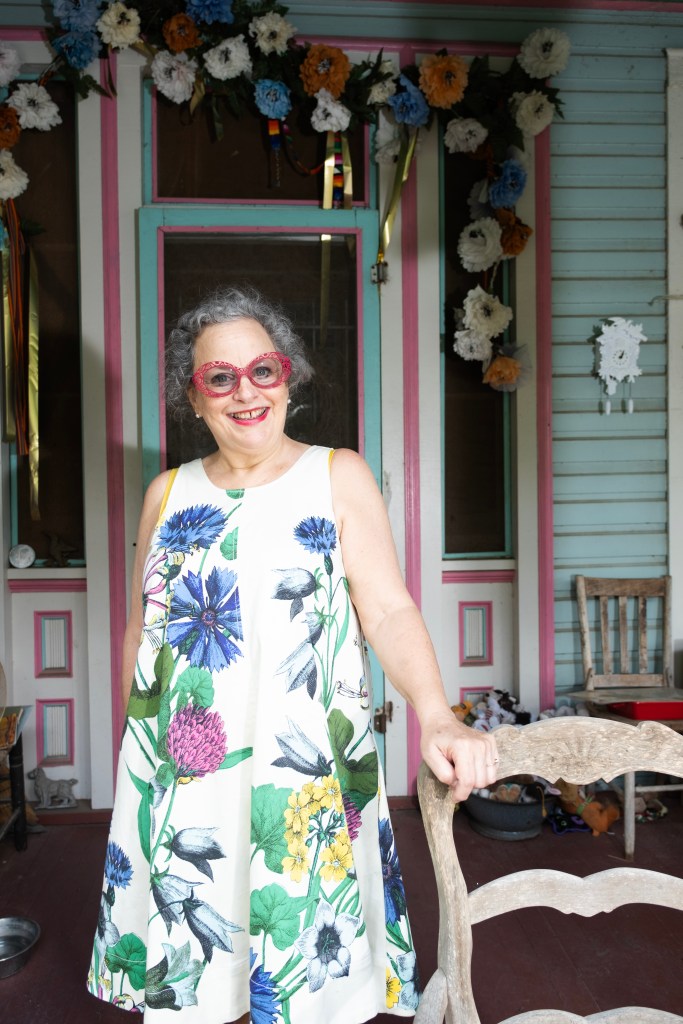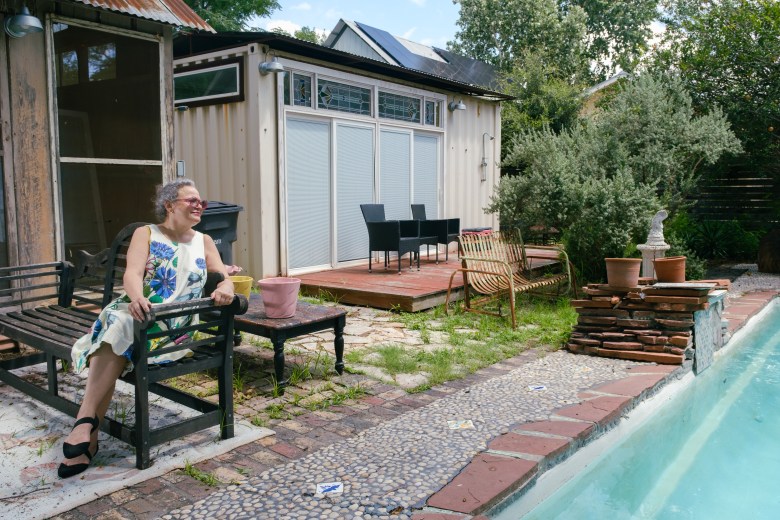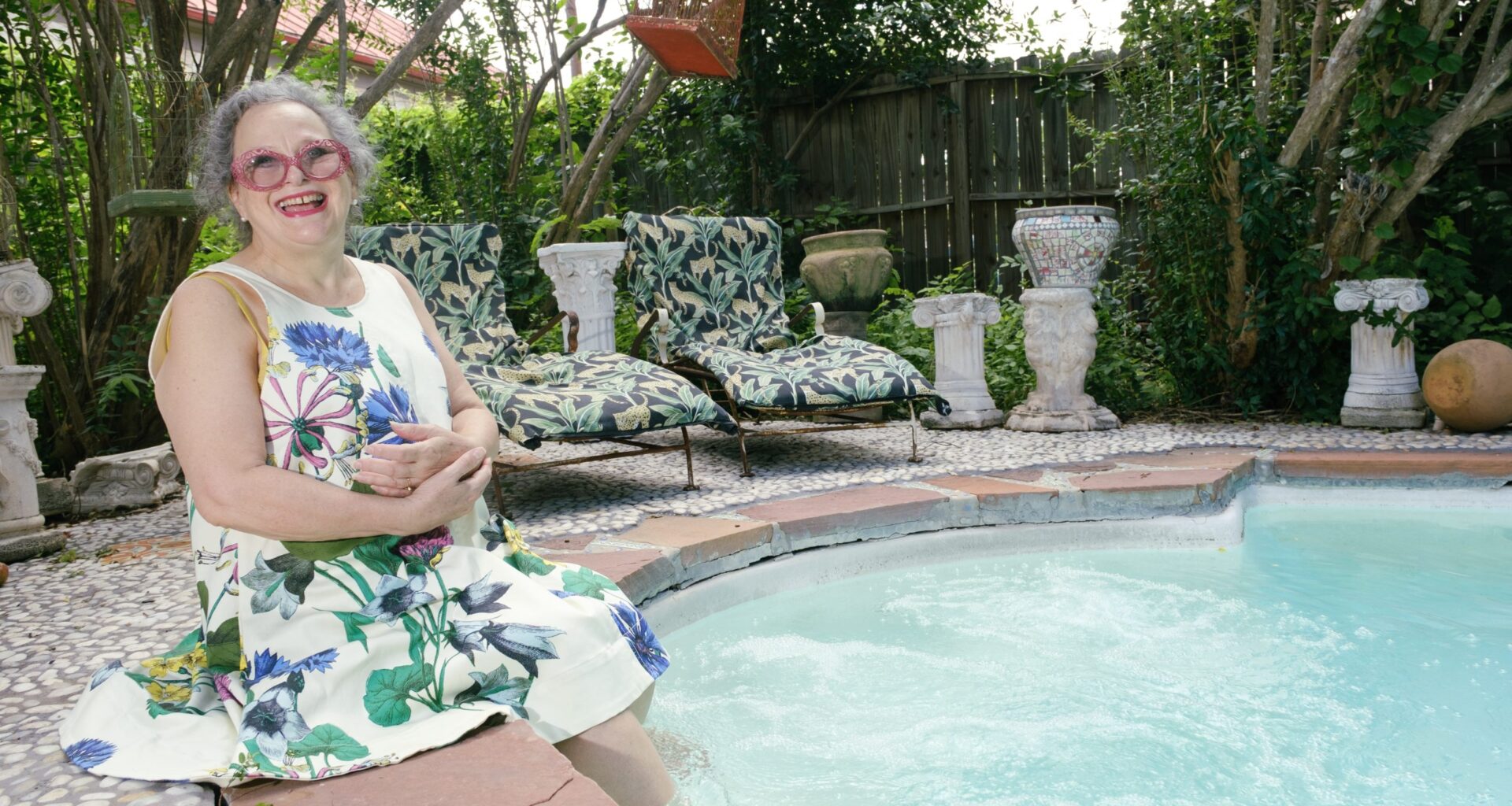The Where I Live series aims to showcase our diverse city and region by spotlighting its many vibrant neighborhoods. Each week a local resident invites us over and lets us in on what makes their neighborhood special. Have we been to your neighborhood yet? Get in touch to share your story. If your story is selected and published, you will receive a $250 stipend.
It’s no wonder our neighborhood is named Lavaca. “La Vaca” in Spanish means “the cow.” These were the grazing grounds and farmlands for the Mission San Antonio de Valero (globally known as the Alamo) established in 1718.
Before, bands of Coahuiltecans lived here — hunter-gatherers who learned cattle ranching in captivity by Spanish Colonial settlers. Coahuiltecans accepted land “owner” terms as they provided protection from Apache and Comanche. But protection and education led to systemic disintegration of traditional ways and insufficient wages for harsh working conditions in agriculture/mining/public works — including contributions to the design/engineering/digging of the acequias, irrigation systems distributing water throughout the labores of the five Spanish Colonial Missions, now a World Heritage Site. Labores were 177-acre land grants issued to individuals for agriculture and livestock cultivation.
Labor Street (from labores) divides Lavaca from the area formerly occupied as the Victoria Courts. A huge portion our neighborhood with Victorian and Queen Anne architecture was plowed down to accommodate San Antonio’s second oldest public housing project, around 1940. This 660-unit complex providing low-income housing became a site of danger until demolished in 2000.
It’s been a quarter century — two generations — since the Courts came down. But a double dog park opened this week in Labor Street Park accommodating Lavaca and planned-and-partially-built mixed-income-housing finally replacing fallow fields where the Courts had been.
The Courts’ feeder school, the original Burnet Elementary School, still sits empty.
Victoria Plaza, among country’s earliest high-rises for very-low-income seniors, is re-filling after a barely-noticeable face-lift. Unauthorized overnighters have brought back gunshots and other unwanted activity.
Another huge Lavaca swath was leveled for Hemisfair in the mid-1960s. We lost churches/synagogues/entire settlements of immigrants. Now the naughts have uplifted Hemisfair into a destination for residents and tourists, with festivals and concerts in large open spaces and plazas, residences/restaurants/bars/coffee-shops/pizza-parlors/ice cream and paleta shops intermingle cleverly-designed contemporary-park features of water/mosaics/plants/paintings. This extraordinary new neighborhood asset, though, has created parking pressures and plans for a new sports complex that will make traffic-logistics more complex.
 Penelope Boyer poses for a portrait on the front porch of her home in Lavaca. Credit: Clint Datchuk for the San Antonio Report
Penelope Boyer poses for a portrait on the front porch of her home in Lavaca. Credit: Clint Datchuk for the San Antonio Report
Lavaca is seeing steep increases in property taxes due to high-income home improvements leading to rising property prices and rents, the presence of finer vehicles on busier streets and golf carts as micro-local transportation.
Long before others, I bicycled Lavaca, night and day — helmetless. Now bike lanes help few-wheelers including scooters compete for space. Gone are paleta vendors’ clown-horns on bicycled ice-boxes, Spanish heard in streets/yards, Conjunto airs, musical ice cream trucks. Now lots of rescued dogs are walked and you hear children.
Lavaca [luxury] properties have elegantly-restored facades, expansive multi-story ultra-contemporary extensions accommodate lap pools and designer landscapes. Lavaca home exteriors can be any color, a claim no other San Antonio neighborhood could make at the time. Interior “renovations/restorations” compromise the character of historic homes: sheet-rocked walls, floorplans diverge from homes’ original plans, attics unrecognizable under central air-conditioning duct-tunnels, detailing destroyed, original hardware and hard wood replaced. “Renovated” homes may flip into Airbnbs.
I bought my Queen Anne home in 1993. Being from the East Coast, I wouldn’t warm my wood house with flames from floorboards. I had all floor heaters removed. Within a week, I begged the operation be reversed. Floor heaters now face strict regulations. I installed mini-splits as a safe anti-invasive cooling system.
Come spring 1994, I planned to plant a garden in my big backyard because that’s what northerners do in spring. Little did I know how different the cultivation calendar was 1,600 miles south. Thankfully, several trees popped up on their own: palm, loquat, fig, live oak.
My house was built by the chief operator of the Western Union at the turn of the 20th century, James F. Marshall. I occasionally caught Marshall’s elderly granddaughter stalking slowly at Canal and Callaghan in a sedan’s backseat. She’d been born in that next-door corner house. A barn once housing a horse fills part of my backyard. Evidently Marshall’s wife picked him up on horseback for lunch at home, returning him daily. I was told my house loved parties — a fact we’ve confirmed.
The first big element dropped in my backyard was a palladium-shaped fiberglass-pool, echoing the shape of the attic’s little stained-glass eave windows. In digging the pool, we smelled horse-manure.
Later, a shipping-container was dragged on-site. It’s now our Airbnb called the Alley Cat on the alley that demarcates the Lavaca National Historic District’s northern blocks from Lavaca’s Local Historic District encompassing the entire neighborhood. Decks and stone walkways eradicate more arable land through permeable surfaces. Xeriscaping completes the project. My backyard, with its incredible view of the Tower of the Americas, definitely likes parties.
 Penelope Boyer in the backyard of her historic Lavaca home, which features a shipping container converted into an Airbnb that she calls the “Alley Cat.” Credit: Clint Datchuk for the San Antonio Report
Penelope Boyer in the backyard of her historic Lavaca home, which features a shipping container converted into an Airbnb that she calls the “Alley Cat.” Credit: Clint Datchuk for the San Antonio Report
From backyard-to-porch, I follow birdsong. Butterflies rest in poolside pollinator gardens before migrating to Mexican roosts. Bats from the world’s largest bat colony just outside the city, swoop the pool at twilight anticipating migration south. Similarly, asylum-seekers passed through our Greyhound Station from Immigration Detention Centers south following dangerous sojourns north. I worked briefly with the Bus Station Ministry assisting refugees. Everyone on their way elsewhere. Ironic, as San Antonio is patron saint of lost things.
I served as Lavaca Neighborhood Association vice-president, then president, in the 1990s. I produced my South Presa Pocket Park/Public Art Project getting a gazebo in one pocket park, a Carlos Cortez faux-bois bus-shelter in another, a Robert Tatum Mission Trails map-mural across from the third. My terms saw the completion of the city’s first formal neighborhood plan, and national and local historic district designations.
I sat on the Southtown Main Street Alliance board advocating attention to Presa Street while Southtown’s focus was on South Alamo Street. Now Presa is a lovely thoroughfare with wonderful restaurants/public art/bars/businesses. I chided Southtown for using Lavaca/Victoria Courts demographics to attract funds for the neighboring mansion-filled King William neighborhood. I raised money from the Texas Commission on the Arts to fund SPARTS: Southtown Supports the Arts providing artist fees for 3D murals on facades of Burnet Elementary School portable classrooms. Each artist was assigned a surface and a grade level to develop public art projects interfacing the Lavaca neighborhood to break down barriers between Lavaca and the Courts.
Each year we had a SPARTS Play Day celebrating these projects. A mayor came. The Courts got its first positive press in many-a-memory. Museums and artist-spaces were given a table to engage Play Day participants — the school’s entire student body. Now common practice, this was new then. SPARTS’ final achievement was to kick-start and help name the Conjunto Heritage Taller with the late-great-Lavacan, Rodolfo Lopez.
Conjunto music has its earliest roots in the Lavaca neighborhood. As does the Frito Bandito. Now a Michelin-starred restaurant rotates its Mexican-region-or-era-themed menu every three-months two blocks from me.
I never leave Lavaca, except to go to Paris.
